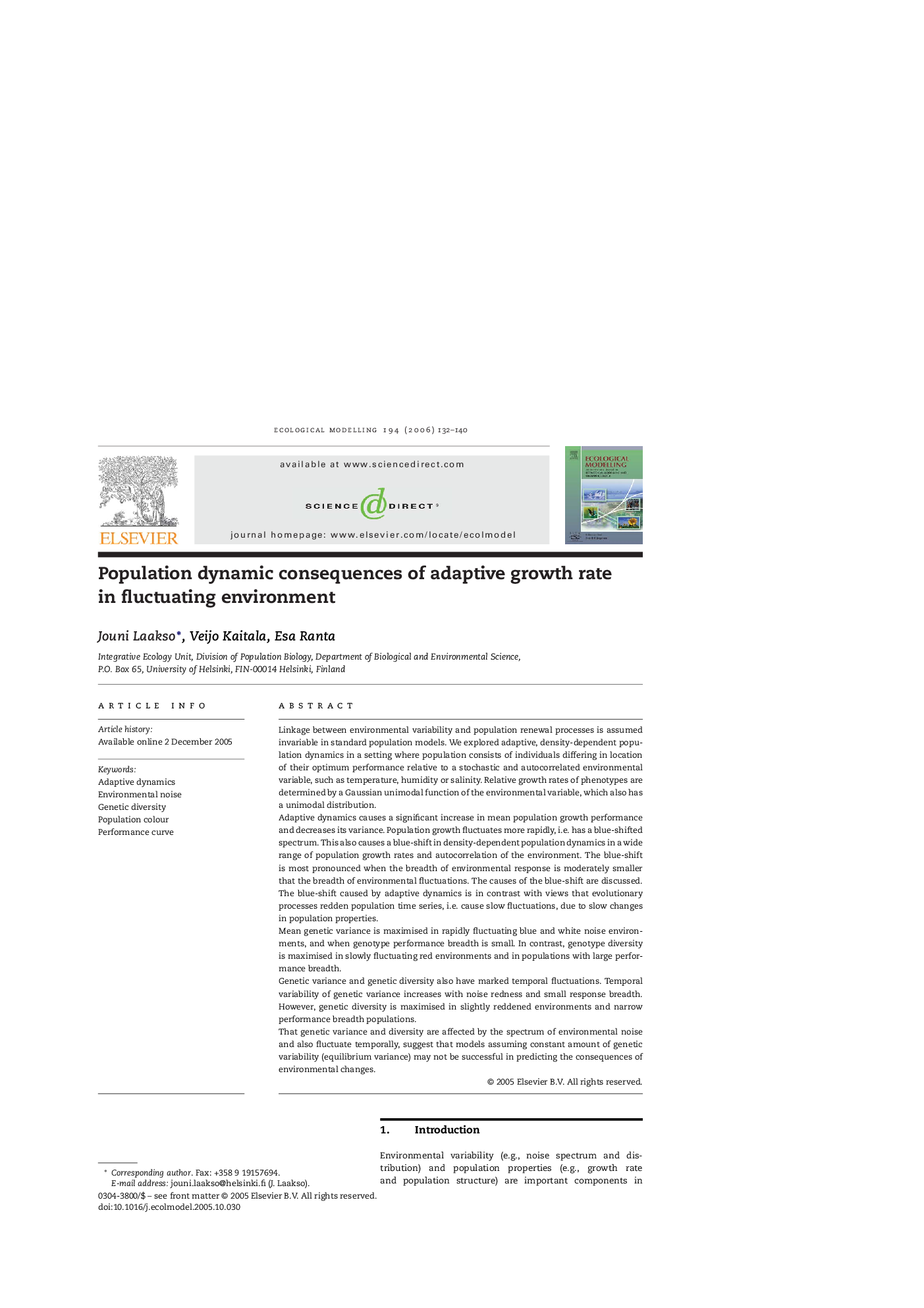| Article ID | Journal | Published Year | Pages | File Type |
|---|---|---|---|---|
| 4379186 | Ecological Modelling | 2006 | 9 Pages |
Linkage between environmental variability and population renewal processes is assumed invariable in standard population models. We explored adaptive, density-dependent population dynamics in a setting where population consists of individuals differing in location of their optimum performance relative to a stochastic and autocorrelated environmental variable, such as temperature, humidity or salinity. Relative growth rates of phenotypes are determined by a Gaussian unimodal function of the environmental variable, which also has a unimodal distribution.Adaptive dynamics causes a significant increase in mean population growth performance and decreases its variance. Population growth fluctuates more rapidly, i.e. has a blue-shifted spectrum. This also causes a blue-shift in density-dependent population dynamics in a wide range of population growth rates and autocorrelation of the environment. The blue-shift is most pronounced when the breadth of environmental response is moderately smaller that the breadth of environmental fluctuations. The causes of the blue-shift are discussed. The blue-shift caused by adaptive dynamics is in contrast with views that evolutionary processes redden population time series, i.e. cause slow fluctuations, due to slow changes in population properties.Mean genetic variance is maximised in rapidly fluctuating blue and white noise environments, and when genotype performance breadth is small. In contrast, genotype diversity is maximised in slowly fluctuating red environments and in populations with large performance breadth.Genetic variance and genetic diversity also have marked temporal fluctuations. Temporal variability of genetic variance increases with noise redness and small response breadth. However, genetic diversity is maximised in slightly reddened environments and narrow performance breadth populations.That genetic variance and diversity are affected by the spectrum of environmental noise and also fluctuate temporally, suggest that models assuming constant amount of genetic variability (equilibrium variance) may not be successful in predicting the consequences of environmental changes.
